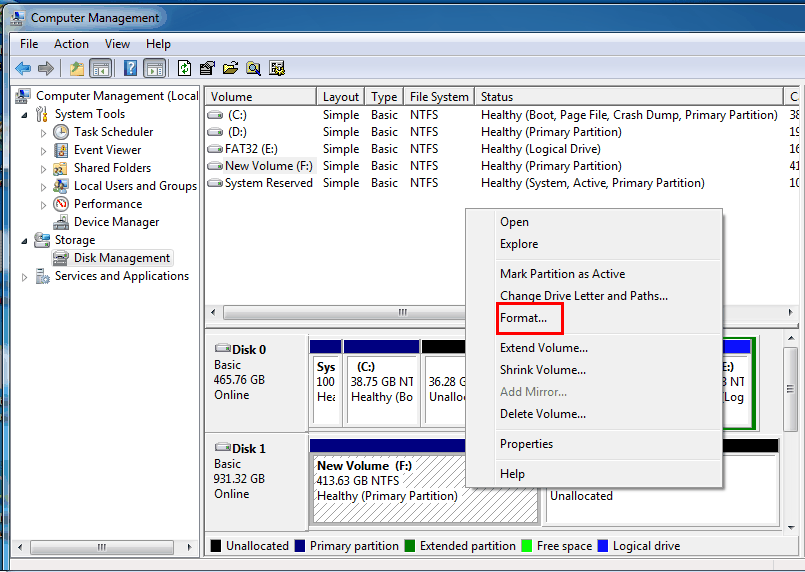
- #How to format my hard drive windows 10 how to
- #How to format my hard drive windows 10 mac osx
- #How to format my hard drive windows 10 full
- #How to format my hard drive windows 10 windows 10
- #How to format my hard drive windows 10 pro
Use its 3rd option, “Moving from Machine to Container”.
#How to format my hard drive windows 10 pro
#How to format my hard drive windows 10 how to
How to backup your Windows so that you can restore programs, settings and files after the reinstallīefore we begin, the most important part is to have a full, complete backup of your computer.
#How to format my hard drive windows 10 full
Alternatively, you can also use any 3rd party backup product that can perform a full system image backup, although that would only allow you to restore files, not programs. The product we will be using for this is Migration Kit Pro, which allows to easily back up, and most importantly to easily restore programs, settings and files after reinstalling Windows (even if you are switching to a different Windows version!). After you reset the system, your programs and data will be gone, and you will need to restore them to get back to normal. The first step in a reinstall like this is to back up everything you’ve got. In this article, we’ll see how to do a complete backup and recovery without losing anything! How to Backup your Windows PC Traditionally, this has been a cumbersome process, and what’s worse – with traditional backups, you only get a partial recovery – user files only – losing all programs, settings, personalization, profiles, passwords etc. In these cases, PC repair professionals would sometimes recommend to back up the computer, wipe its hard drive, and reinstall Windows then, to recover your stuff from backup.
#How to format my hard drive windows 10 windows 10
It could be a virus infection, a Windows Updates failure, or just Windows 11 / Windows 10 becoming too slow or problem-ridden for use. In this article, we will learn how to reinstall Windows on your PC, and do a complete system wipe and refresh – while still retaining your programs, profile, settings, documents, pictures, music, movies, favorites, wallpaper and everything else.Ī Windows wipe and reinstall is a useful procedure in many cases. The drive should now be accessible in Finder.įor products related to this article, click here.How to reinstall your Windows 11 or Windows 10, format the drive and reset everything – without losing your programs and files Select the new drive and click the Partition tab.Ĭlick Options and verify that it is set to GUID Partition Table. Navigate to Applications and click Utilities. To create a partition on a new drive, complete the following: Note: The following steps create an HFS+ (Mac OS Extended (Journaled)) partition that uses the entire drive space. If you are not prompted to initialize the drive and you cannot find the drive in Finder, you will need to create a partition on the drive.

If you are prompted to initialize the drive, click Initialize.
#How to format my hard drive windows 10 mac osx
Mac OSX detects a drive that needs to be initialized and automatically prompts you to initialize the drive. The partition uses a file system (for example, HFS+, ex-FAT, NTFS, and so on). A partition defines an area of the drive to use for storing data. Mac OSīefore you can access a new or formatted drive in your operating system, you need to initialize it first and then create a partition on the drive. The new drive should appear in Windows Explorer.
:max_bytes(150000):strip_icc()/010_how-to-format-a-hard-drive-2626077-5c3e846dc9e77c0001329a59.jpg)

The partition uses a file system (for example, ex-FAT, NTFS, and so on).

Before you can access a new or formatted drive in your operating system, you need to initialize it first and then create a partition on the drive.


 0 kommentar(er)
0 kommentar(er)
